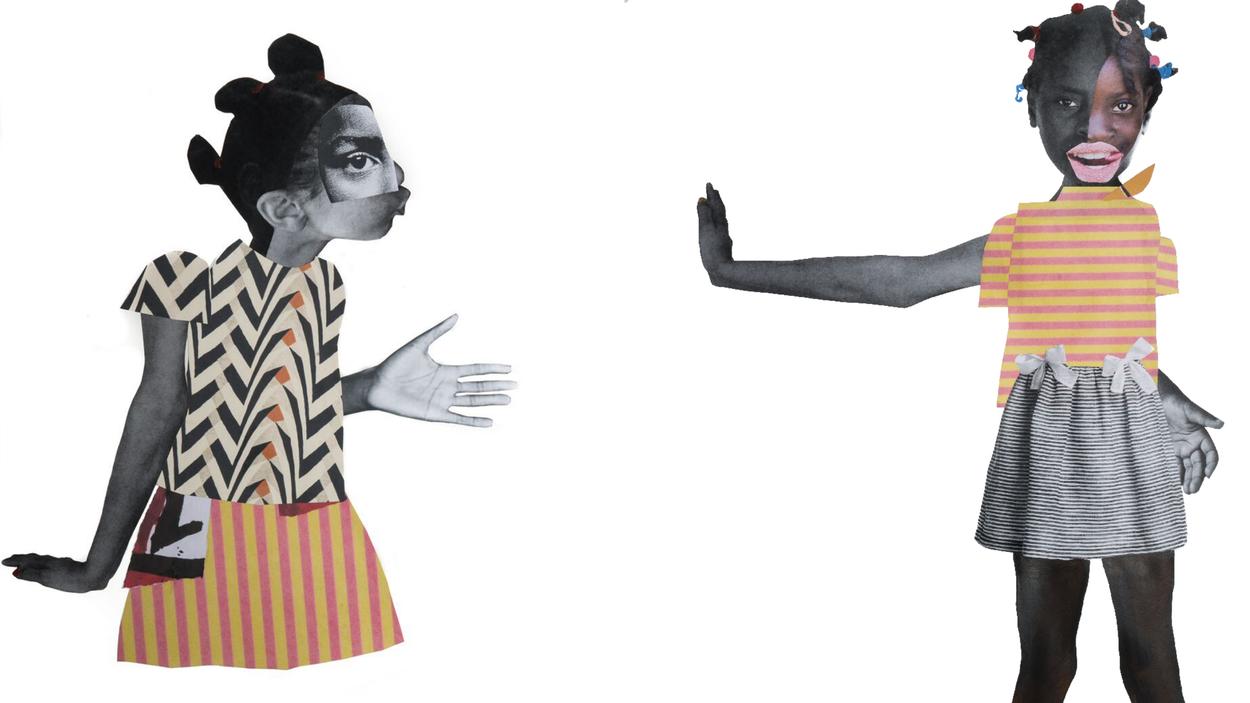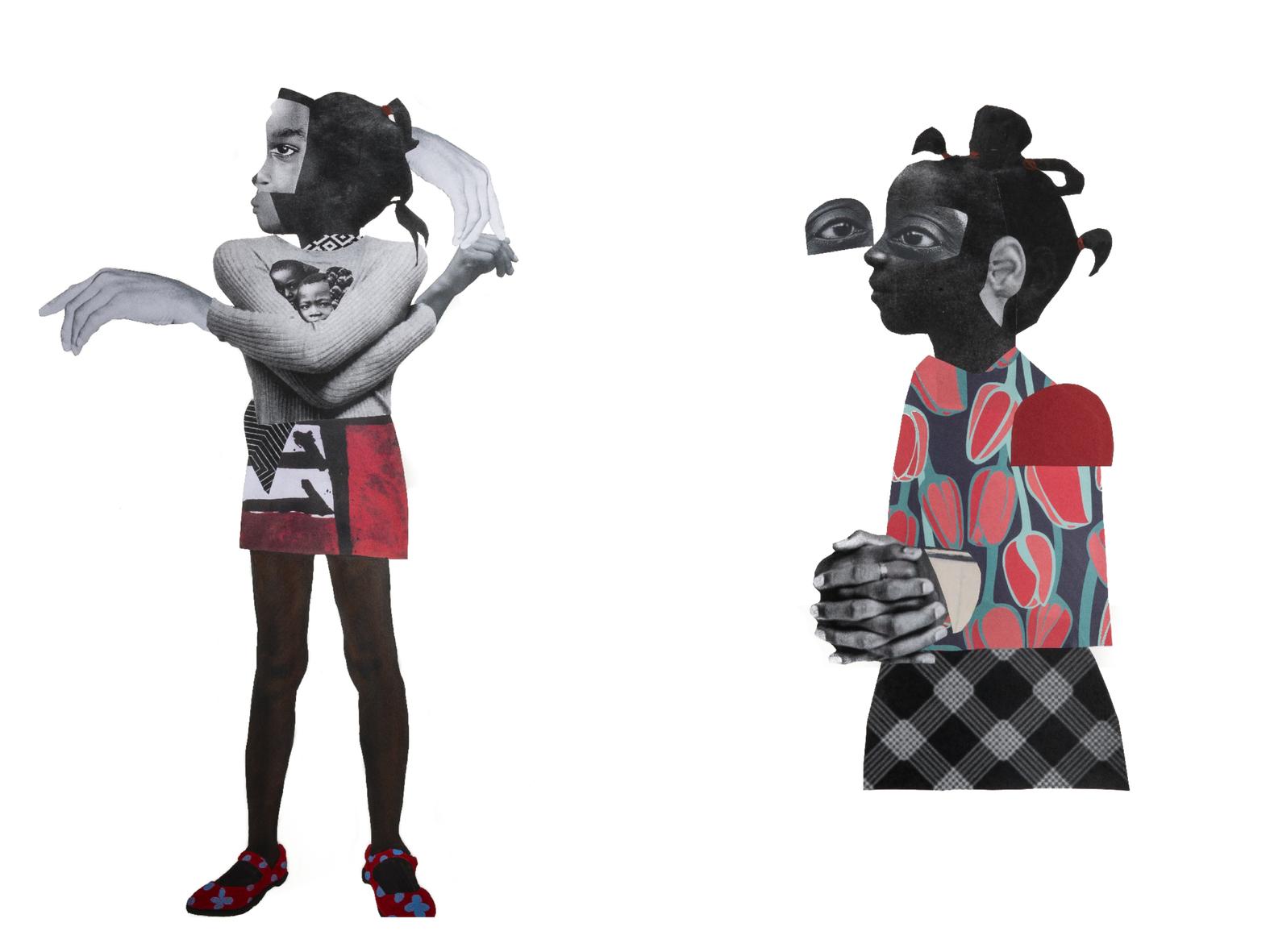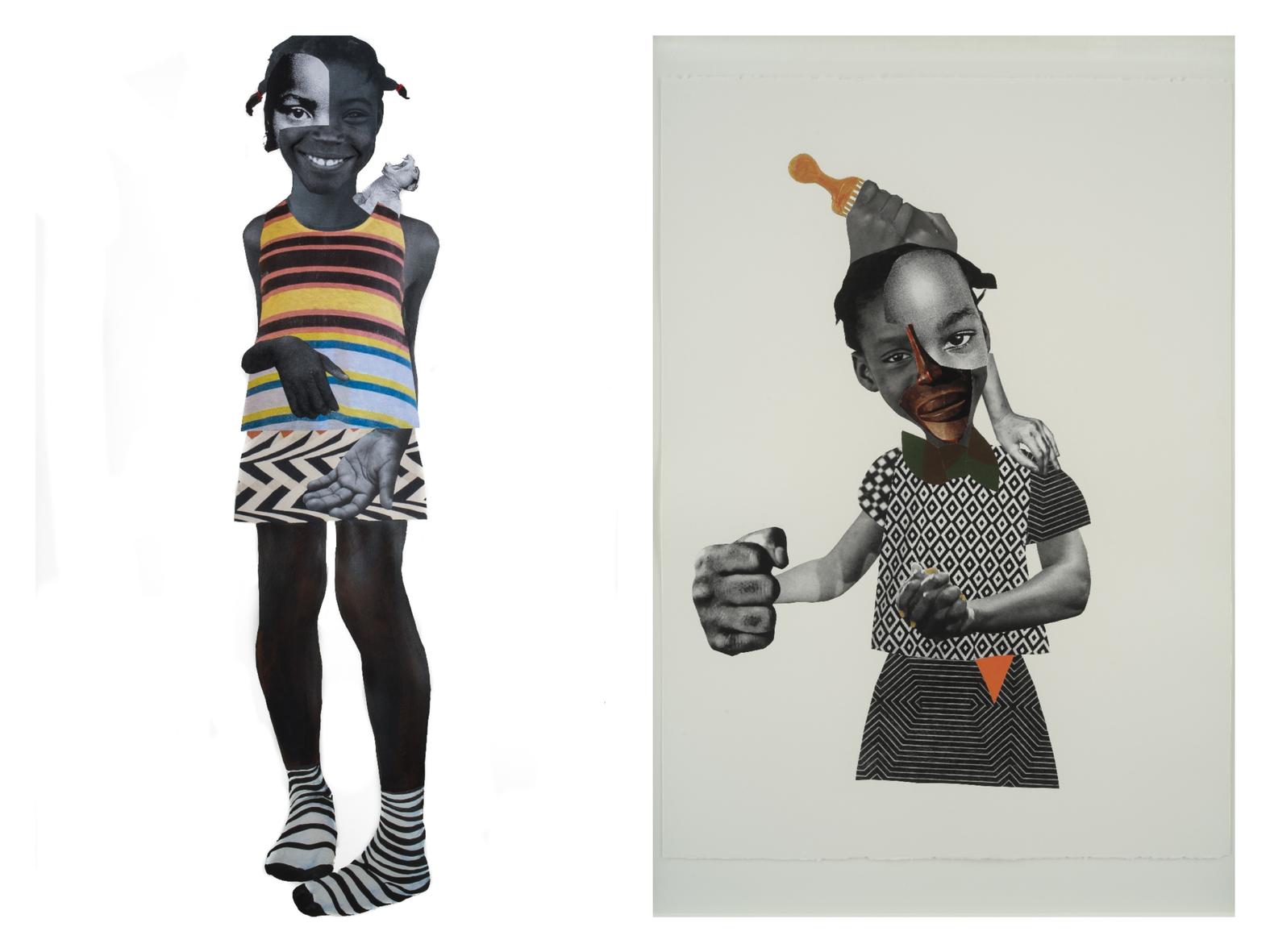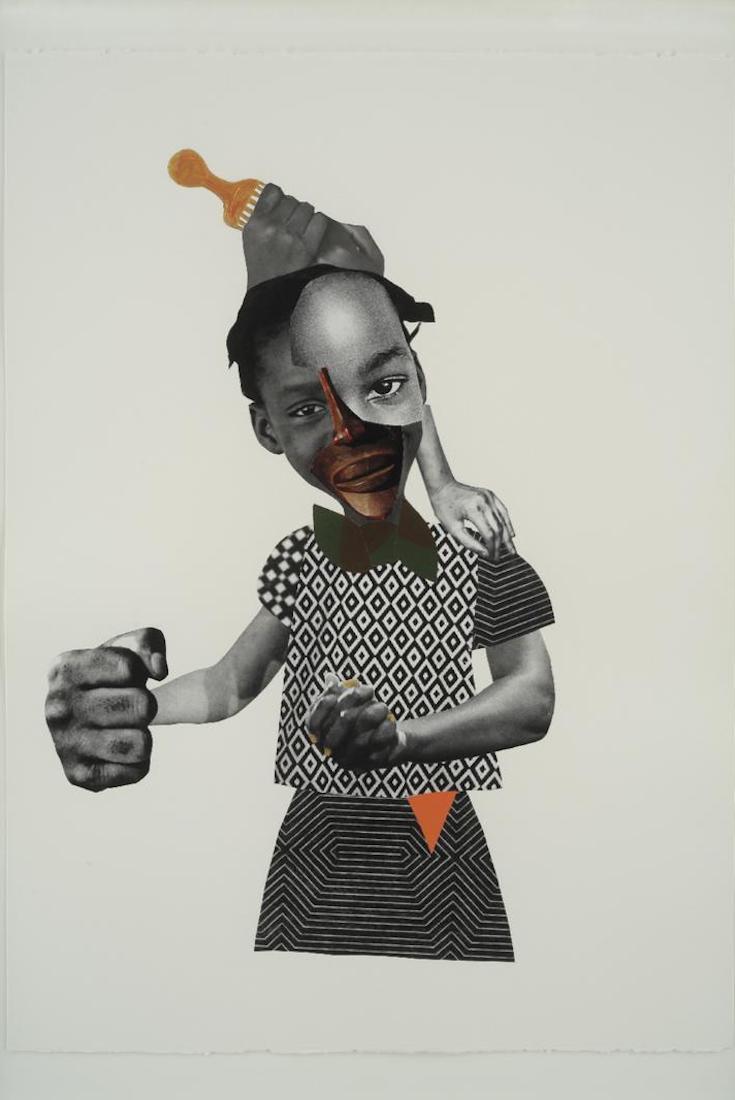At the age of 55, the painter Deborah Roberts has become an art star basically overnight. In a year’s time, she has sold out a Chelsea gallery exhibition, shown her work at the Studio Museum in Harlem, and has had three medium-scale collages purchased by Beyoncé Knowles. For nearly two decades, Roberts has made work, painting, collage, and prints that focus on the lives of black girls and women. But in an art world that has long concerned itself with male artists and has embraced the exploration of the black male body and identity, no one really cared.
 Left: Deborah Roberts, The Plea, 2017. Right: Deborah Roberts, Not today, 2017. Courtesy of Jenkins Johnson Gallery
Left: Deborah Roberts, The Plea, 2017. Right: Deborah Roberts, Not today, 2017. Courtesy of Jenkins Johnson Gallery“I feel validated, but I hope I’m not dying,” Roberts said recently, laughing. “I’ve been working at this and talking about this same thing and all of a sudden, it’s like someone said, ‘You know what? You’re right.’” She added, “I am very humbled by the attention. But I never gave up. I didn’t conform to what society thought was good or bad work. I just kept saying, ‘This work is important, black women and girls are important.’”
 Left: Deborah Roberts, Be Still, 2018. Right: Deborah Roberts, Baldwin’s Promise, 2017. Courtesy of Jenkins Johnson Gallery
Left: Deborah Roberts, Be Still, 2018. Right: Deborah Roberts, Baldwin’s Promise, 2017. Courtesy of Jenkins Johnson GalleryIn her two recently opened exhibitions—Deborah Roberts: The Evolution of Mimi on view at the Spelman College Museum of Fine Art through May 19, and Uninterrupted at San Francisco’s Jenkins Johnson Gallery through March 17—the Austin, Texas, based artist presents an array of fictive visions of young black girls constructed out of found images of black women from magazines. Portraits, like Baldwin’s Promise and Unbothered, are images of black girlhood that critique narrow beauty standards, colorism, and the stereotyping of black girls and women emotionally, physically, and sexually. Not Today, a collaged construction of a black girl with her hand raised, is a picture of power. The gesture evokes the way young black girls I knew said during recess, in a moment of playful defiance, vulnerability, and agency: talk to the hand. It’s a small moment of black girlhood rarely seen in art.
 Left: Deborah Roberts, Bare feet girls grow up mean, 2017. Right: Deborah Roberts, About Face, 2017. Courtesy of Jenkins Johnson Gallery
Left: Deborah Roberts, Bare feet girls grow up mean, 2017. Right: Deborah Roberts, About Face, 2017. Courtesy of Jenkins Johnson Gallery“I talk a lot about vulnerability because there are different types of black women,” Roberts explained. “I wanted to talk about [in these shows] how we become women. We start off as black girls, and we soon become black American women. So what does that trail look like? How do we begin? How has our beauty been imagined? Those are the questions we should be asking ourselves.”

